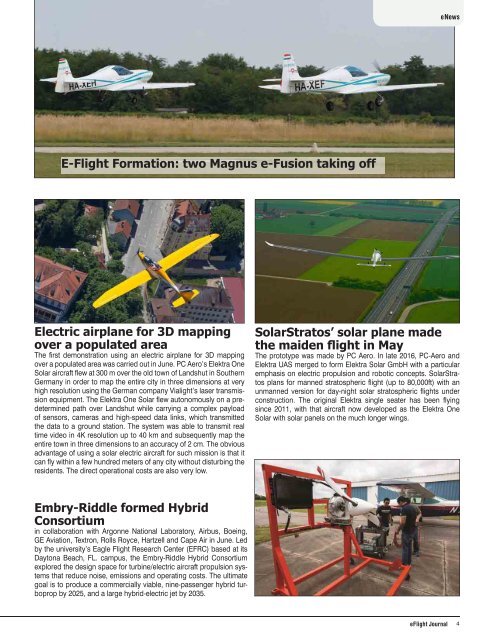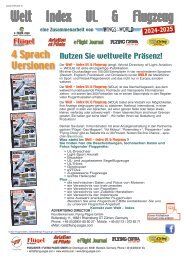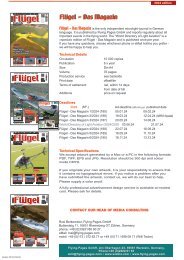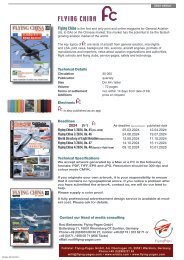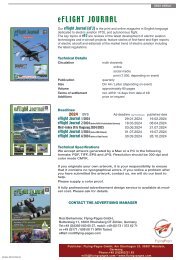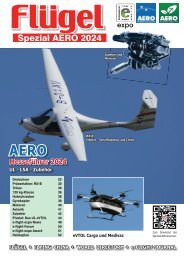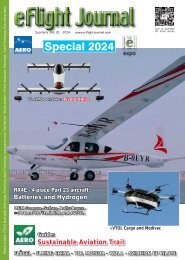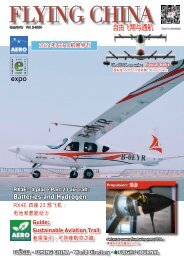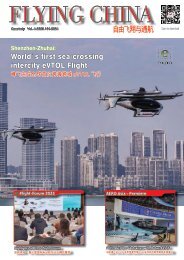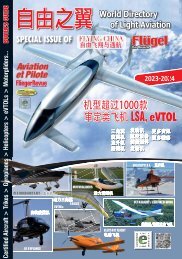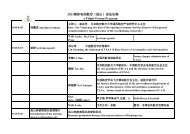You also want an ePaper? Increase the reach of your titles
YUMPU automatically turns print PDFs into web optimized ePapers that Google loves.
e News<br />
E-Flight Formation: two Magnus e-Fusion taking off<br />
Electric airplane for 3D mapping<br />
over a populated area<br />
The first demonstration using an electric airplane for 3D mapping<br />
over a populated area was carried out in June. PC Aero’s Elektra One<br />
Solar aircraft flew at 300 m over the old town of Landshut in Southern<br />
Germany in order to map the entire city in three dimensions at very<br />
high resolution using the German company Vialight’s laser transmission<br />
equipment. The Elektra One Solar flew autonomously on a predetermined<br />
path over Landshut while carrying a complex payload<br />
of sensors, cameras and high-speed data links, which transmitted<br />
the data to a ground station. The system was able to transmit real<br />
time video in 4K resolution up to 40 km and subsequently map the<br />
entire town in three dimensions to an accuracy of 2 cm. The obvious<br />
advantage of using a solar electric aircraft for such mission is that it<br />
can fly within a few hundred meters of any city without disturbing the<br />
residents. The direct operational costs are also very low.<br />
SolarStratos’ solar plane made<br />
the maiden <strong>flight</strong> in May<br />
The prototype was made by PC Aero. In late 2016, PC-Aero and<br />
Elektra UAS merged to form Elektra Solar GmbH with a particular<br />
emphasis on electric propulsion and robotic concepts. SolarStratos<br />
plans for manned stratospheric <strong>flight</strong> (up to 80,000ft) with an<br />
unmanned version for day-night solar stratospheric <strong>flight</strong>s under<br />
construction. The original Elektra single seater has been flying<br />
since 2011, with that aircraft now developed as the Elektra One<br />
Solar with solar panels on the much longer wings.<br />
Embry-Riddle formed Hybrid<br />
Consortium<br />
in collaboration with Argonne National Laboratory, Airbus, Boeing,<br />
GE Aviation, Textron, Rolls Royce, Hartzell and Cape Air in June. Led<br />
by the university’s Eagle Flight Research Center (EFRC) based at its<br />
Daytona Beach, FL. campus, the Embry-Riddle Hybrid Consortium<br />
explored the design space for turbine/electric aircraft propulsion systems<br />
that reduce noise, emissions and operating costs. The ultimate<br />
goal is to produce a commercially viable, nine-passenger hybrid turboprop<br />
by 2025, and a large hybrid-electric jet by 2035.<br />
e Flight Journal<br />
4


